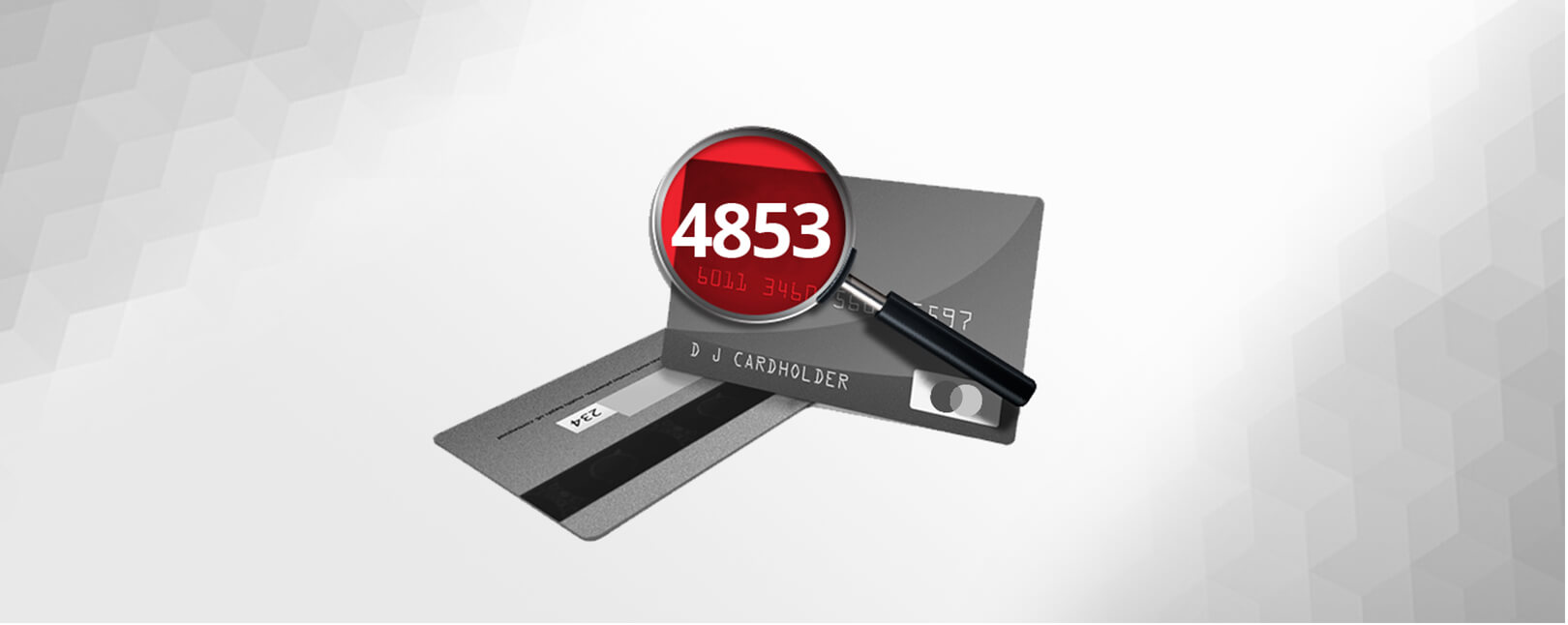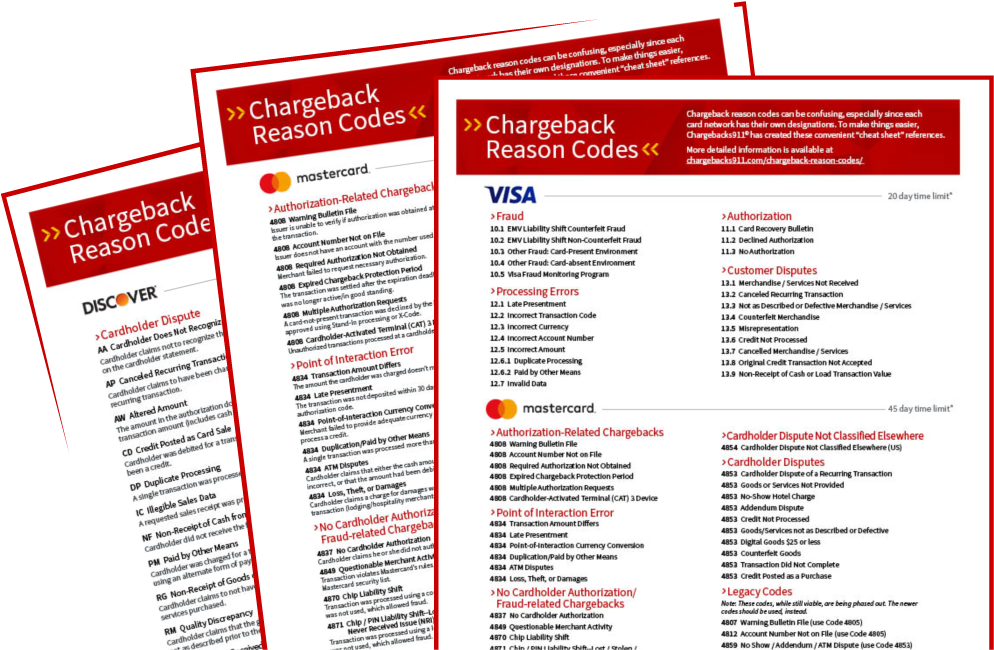Mastercard Reason Code 4853 Defective/Not as Described
Mastercard chargeback reason code 4853 is one of the numeric labels assigned by banks to each customer dispute, indicating the given reason for the claim. We say the given reason because it may or may not reflect the true reason.
Under certain circumstances, Mastercard may allow consumers to reverse a payment card transaction by filing a chargeback. Chargebacks were designed to be a “last-resort” for disagreements that cannot be resolved with the merchant. However, they’re more and more often used as a loophole to commit fraud.
Reason code 4853 refers to the broad category “Cardholder Dispute.” In general, this means the cardholder was not happy with a purchase and blames the merchant. The code can be used in multiple specific situations, many of which had their own individual codes at one time. When necessary, an additional message will be provided along with the reason code to inform the merchant which particular type of chargeback applies to the claim.
In claims featuring a 4853 reason code, one of the possible causes is “Defective or Not as Described,” referring to the merchandise or service received.
Should Merchants Worry About Reason Code 4853 Chargebacks?
Chargeback questions? We have answers. Click to learn more.

What Is a Defective/Not as Described Chargeback?
Chargeback reason code 4853 can be used to indicate disputes in which the cardholder feels that the actual merchandise received (or service provided) differs greatly from the written or verbal description provided at the time of purchase.
Other reasons for a “not as described” chargeback can include merchandise that was damaged or defective upon receipt, or perhaps even the wrong item altogether. The customer can also dispute the overall quality of the merchandise or service. Essentially, legitimate chargebacks with a “not as described” reason code can happen whenever the cardholder feels the end result of a transaction was provably different than promised.
This can be the result of intentional merchant fraud, but is more commonly caused by innocent merchant error. It’s crucial for businesses to recognize the common missteps that might trigger this type of chargeback:
- The merchant shipped the wrong merchandise to the cardholder.
- The merchandise was shipped, but was not packed correctly and was damaged during shipment.
- The merchandise was defective in some way before shipping.
- The merchant inaccurately described the merchandise or services (in a written description, pictures or videos, or in a verbal agreement).
- The merchant did not perform the services as described.
Obviously, there’s a problem if a business regularly provides merchandise or services that don’t match the description, or consistently having packages damaged in shipment. This would need to be addressed by the merchant. As we alluded to earlier, though, a false reason code may be used to mask an attempt at friendly fraud.
Defective or Not as Described Chargebacks and Fraud
Reason code 4853 is a favorite choice for friendly fraudsters because it is difficult to disprove. If a customer says an item doesn’t work, the bank often accepts the claim at face value. The bank will tell the cardholder that the merchandise must either be returned to the merchant, or made available to be picked up. That doesn’t necessarily mean the goods will make it back to the merchant, though.
The customer may forget to make the return, or put off the return in the hopes the merchant won’t notice. In such a situation, the merchant has a good cause for winning a reversal.
So why would a merchant choose not to challenge this type of invalid dispute? The truth is that, in many cases, the merchant may feel it’s not worth pursuing. The seller may choose to simply write off the loss, especially for smaller, low-ticket value items.
The merchant can still fail to follow up even with larger orders. They might assume the return was (or will be) made and neglect to double-check. They could also promise the customer a return shipping label that never gets sent.
Any of these scenarios could happen unintentionally. However, savvy friendly fraudsters understand there is a chance that filing a chargeback might result in getting a refund without having to return the item. The cardholder has an obligation to return the purchase, but merchants bear some of the responsibility for making sure that happens.
Another reason fraudsters like reason code 4853 is the fact that conditions such as “quality” can be subjective. Some situations are obvious, such as ordering a black sofa and receiving a brown one; if the merchant refuses to address the situation, a 4853 chargeback may be valid.
But what if the cardholder says the sofa was “not as described,” claiming that the stitching is of low quality? Exactly what does that mean? The bank may ask for an expert opinion, but even if that does not happen, the merchant should not just accept the customer’s complaint.
Rather, merchants have the right to request their own expert to review and provide evidence of the claim’s validity. Suspicious disputes should always be carefully investigated, and merchants should challenge invalid chargebacks through the representment process.
Defective/Not as Described Disputes: Conditions and Prevention
Issuers have a limited timeframe to file chargebacks claiming defective/not as described goods or services. The time limit, however, can vary according to the situation. Disputes must be filed within 120 calendar days of either:
- The transaction processing date
- The delivery date
- The cancellation date (in regards to a service)
- The date services ended.
Also, a 4853 chargeback may not be filed more than 540 days from the original transaction processing date. On the other hand, if the claim involves cancelled services or returned merchandise, the issuer must wait a minimum of 15 calendar days before initiating a dispute.
On the merchant side, there are certain steps one can take to try and mitigate the risk of this specific type of chargeback:
- Double-check the descriptions of merchandise or services anywhere they’re displayed. This includes advertising, online, in printed catalogs, and even transaction receipts.
- Never refer the cardholder to the manufacturer in cases of damaged or defective goods. The merchant of record is considered the liable point of contact for resolution.
- While one’s return policy has no bearing on disputes that fall under this reason code, a clear and concise return policy may help avoid reason code 4853 (and other) chargebacks.
Preventative measures can significantly lower the overall volume. That said, some illegitimate chargebacks are likely to slip through the cracks using a defective/not as described reason code. As noted above, these friendly fraud chargebacks should always be disputed by the merchant.
Chargeback Prevention: A Wider View
While merchants can take many steps to help prevent legitimate claims, fraudulent chargebacks are another matter: friendly fraud is post-transactional in nature, meaning there’s no sure way to identify it beforehand. Merchants can do everything “right” yet still have a customer dispute filed against them.
So while it’s generally more efficient to take a proactive stance when it comes to chargeback management, a truly effective strategy must encompass both prevention and disputing cases of friendly fraud.
Chargebacks911® can help your business manage all aspects of chargeback reason codes, with proprietary technologies and experience-based expertise. Contact us today for a free ROI analysis to learn how much more you could save.










